


Modular Elevators – 2 Elevators 1 School / The MEM Elevator System is most often placed in mid-rise projects for every type of build. As a result, it is easy to forget that we cut our teeth on the low-rise, two and three stop elevators designed specifically for schools.
Over the years we have placed over 100 of our units in schools alone. They are a fast solution to the problem of needing little interruption to the school year. The flexibility is not only in fast placement and start up but, they can be designed to be placed inside a project or on an exterior wall. Placement for MEM is not a usual concern as they can go wherever your architecture team deems suitable.
Below you can see a series of photographs of several school projects that successfully used the MEM Elevator System as well as a short video where 2 elevators were placed in one school.
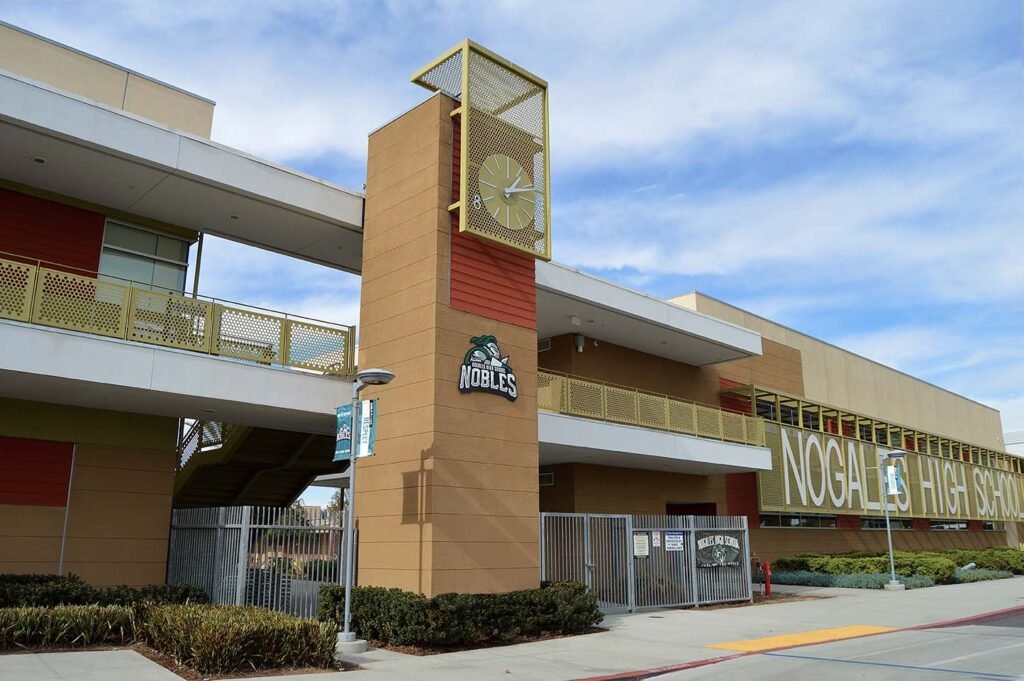

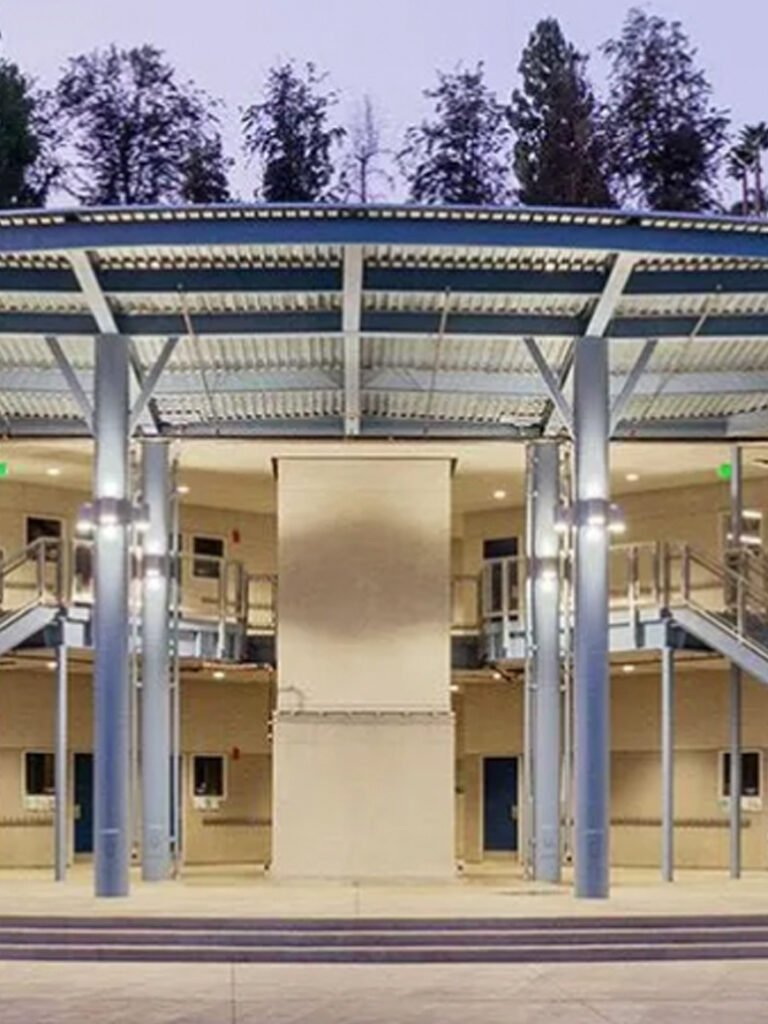



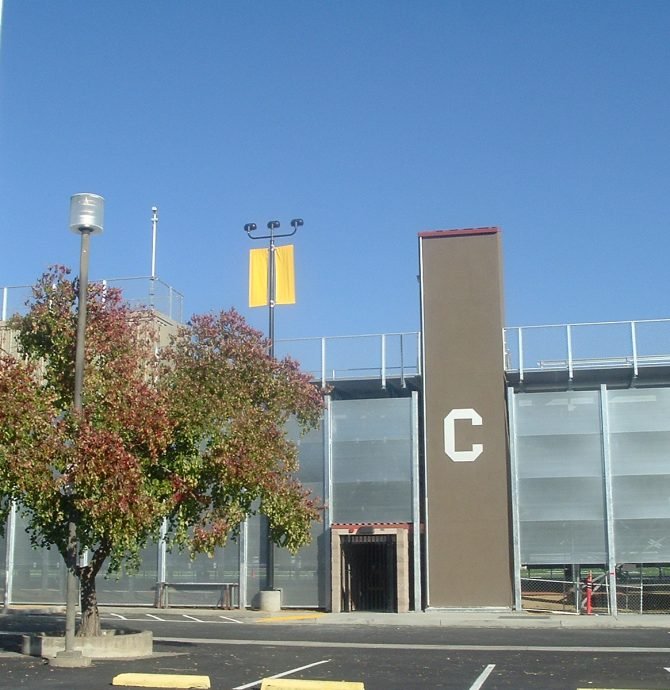
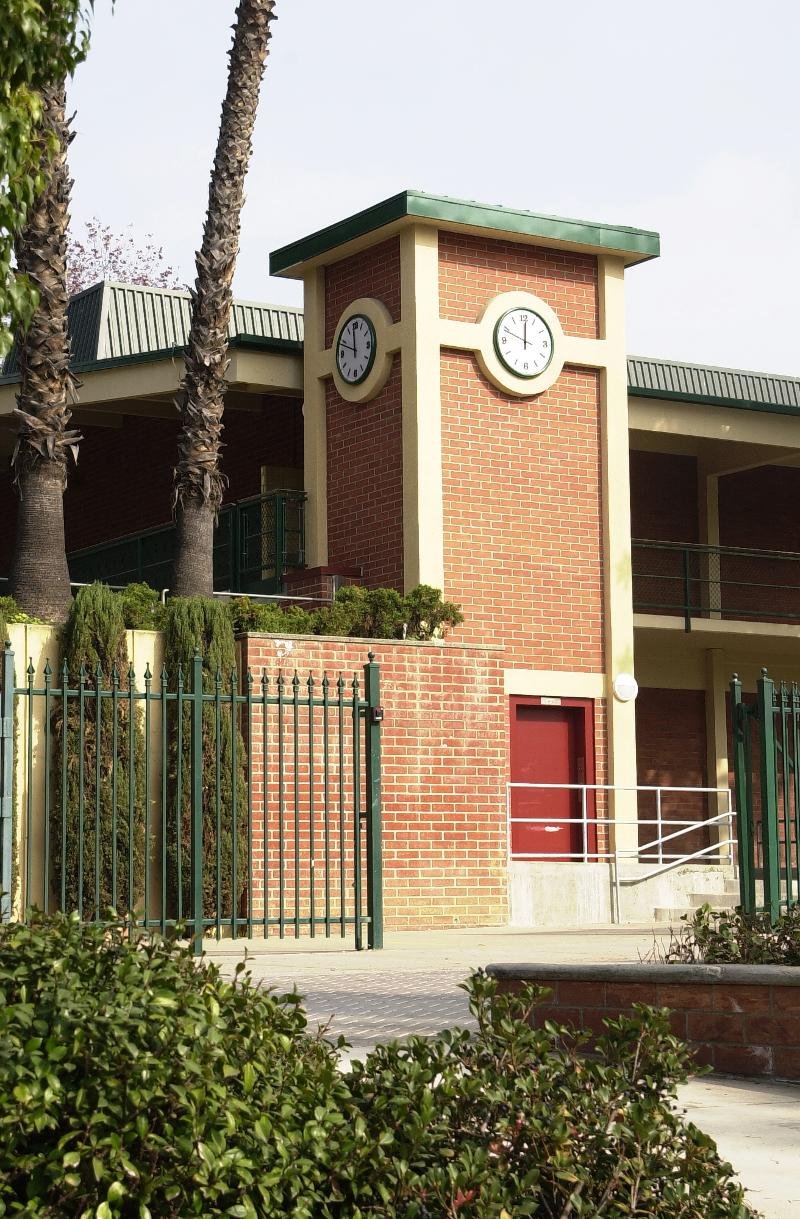
And just in case you are curious, we can conform with any and all jurisdictional requirements. That includes the stringent requirements of the California Department of State Architects (DSA). DSA projects can sometimes be a difficulty for some solutions. But, we comply fully and are willing to work with any authority, in any state to make sure the project goes smoothly. For more information about DSA, just click this link.
So if you are in need of a school elevator anywhere in the US you can act. Or if you are just a bit curious contact us. We can provide you a seamless and easy solution to your school projects. To find out more we provide two options below.
If you have a project in mind and think we would be a solution click the Fast Track Quote button below. Fill out as much as you know on the form. We will contact you with in 24 hours to fill in any blanks and let you know a thumbnail number. We also believe in transparency, so we offer a great opportunity to schedule a live virtual factory tour. Just click the button and request a date.

MEM Gains Approval Across the US – Los Angeles, CA. – Last month Modular Elevator Manufacturing made big news regarding HCD approval in California. It gained official approval for models of their MEM Elevator System in the state. But, now MEM continues to break news in the elevator and modular industry as well by adding projects in Connecticut, Illinois, Detroit – Michigan, Indiana, and Georgia this quarter.
The MEM Elevator System is a complete commercial quality elevator. It is a hoistway or shaft produced in a factory out of tough 4X4 inch steel, wrapped in drywall. Inside it contains all the elevator components pre-installed in the manufacturing facility. This includes the doors, wiring, the elevator cab, and all the buttons or hall calls. It arrives on a truck and put in place in a matter of a couple hours. When given power it is started up in less than a week.
First, MEM has produced and placed well over 100 elevators in several states, mostly in California. As MEM continues to expand and grow, jurisdictions once closed have become open to us. Along with the traction elevator approval this means more opportunities for inclusion in nearly all jurisdictions across the US.
“This is a gamechanger.” According to Hugo Beltran, Vice President of Sales. “National acceptance, recognition from HCD in California, and approval to place units in Illinois, Michigan and other locations expands our opportunities. But it also expands the possibilities of a better elevator system in most states and cities across America.”
“This is a game changer!”
Hugo Beltran – MEM Vice President of Sales
Beltran went on to say that with the national housing shortage, modular elevators can speed any type of project to a faster completion. Many of the ponderous steps involved with onsite installation are removed as the installation is moved to a factory setting.
The California Department of Housing and Community Development gave its approval for the MEM Elevator System HW2 – 3500 product earlier this month and it will be a game changer for the elevator and construction industry. The California HCD is the state agency responsible for overseeing the planning, development, and preservation of affordable housing, as well as managing various housing-related programs and policies in California. The HCD works on initiatives to provide safe, affordable housing for residents, promote sustainable community development, and address homelessness. They also support local governments with housing policy, zoning regulations, and funding for housing projects.
This is a game changer for Modular Elevator Manufacturing (MEM) to be approved by the HCD. It ensures that the elevators meet strict safety, building, and accessibility codes required by the state. This approval ensures that the elevators are compliant with California’s standards, particularly for modular homes and structures that often need specialized installations. Plus this speeds up the approval process by weeks if not months, significantly closing the time from concept to installation.
Here are a few key reasons why approval from HCD is so important:
This breakthrough in approval means that the MEM Elevator System structure no longer has to go through the local jurisdictional inspection process. In short, the approval by HCD is necessary for ensuring that MEM elevators are safe, compliant, and ready for use in California’s modular construction projects.
Although this is great news for Modular Elevator Manufacturing there are some restrictions that need to be explained. The designation is not on all MEM products. It is for only the HW2 – 3500. This is the best selling commercial modular elevator in California. But depending on your project it may have to go through the normal approval process.
The designation is also only for modular housing projects in California. Although, MEM distributes nationwide to a wide variety of vertical markets including, apartment complexes, commercial structures, school, colleges and universities, stadiums, hotels, medical facilities, and other types of industries, the HCD designation does not apply.
The building tie-ins are not a part of the HCD approval and must still undergo approval by the proper authorities.
It is however to good to know that the HCD has recognized the MEM Elevator System.
Finally, the construction industry will have an approved alternative to traditional elevators that slow the construction process. There is no more waiting on the elevator for projects that can use the HCD designation. As a result on these projects the elevator company will no longer get in the way and control the jobsite. Also, it speeds up the approval process by weeks if not months, significantly closing the time from concept to installation.

On a side note, the HCD designation is important for other reasons. It shows that the Modular Elevator Manufacturing process and approved products are of the highest quality. Also, they can meet stringent approval processes in most any jurisdiction. This has been seen in the many approved projects. Even in some jurisdictions that were thought to have been off limits in the past.
So, whether you are in California or any other state in the union you can be confident that the modular elevator you are purchasing is high-quality. They are even a high enough quality for approval in earthquake prone California.
If you would like more information regarding the MEM Elevator System for use in one of your projects please click the button below to request a Fast Track Quote. Also, you can request a factory tour to get a better perspective on the revolutionary MEM Elevator System.

MEM Gains HDC Approval – Los Angeles, CA. Modular Elevator Manufacturing has now gained official approval for models of their MEM Elevator System in the state of California. The MEM Elevator System is a complete commercial quality elevator. It is a hoistway or shaft produced in a factory out of tough 4X4 inch steel, wrapped in drywall. Inside it contains all the elevator components pre-installed in the manufacturing facility. This includes the doors, wiring, the elevator cab, and all the buttons or hall calls. It arrives on a truck and put in place in a matter of a couple hours. When given power it is started up in less than a week.
The California Department of Housing and Community Development gave its approval for the MEM Elevator System HW2 – 3500 product earlier this month and it will be a game changer for the elevator and construction industry. The California HCD is the state agency responsible for overseeing the planning, development, and preservation of affordable housing, as well as managing various housing-related programs and policies in California. The HCD works on initiatives to provide safe, affordable housing for residents, promote sustainable community development, and address homelessness. They also support local governments with housing policy, zoning regulations, and funding for housing projects.
This is a game changer for Modular Elevator Manufacturing (MEM) to be approved by the HCD. It ensures that the elevators meet strict safety, building, and accessibility codes required by the state. This approval ensures that the elevators are compliant with California’s standards, particularly for modular homes and structures that often need specialized installations. Plus this speeds up the approval process by weeks if not months, significantly closing the time from concept to installation.
Here are a few key reasons why approval from HCD is so important:
This breakthrough in approval means that the MEM Elevator System structure no longer has to go through the local jurisdictional inspection process. In short, the approval by HCD is necessary for ensuring that MEM elevators are safe, compliant, and ready for use in California’s modular construction projects.
Although this is great news for Modular Elevator Manufacturing there are some restrictions that need to be explained. The designation is not on all MEM products. It is for only the HW2 – 3500. This is the best selling commercial modular elevator in California. But depending on your project it may have to go through the normal approval process.
The designation is also only for modular housing projects in California. Although, MEM distributes nationwide to a wide variety of vertical markets including, apartment complexes, commercial structures, school, colleges and universities, stadiums, hotels, medical facilities, and other types of industries, the HCD designation does not apply.
The building tie-ins are not a part of the HCD approval and must still undergo approval by the proper authorities.
It is however to good to know that the HCD has recognized the MEM Elevator System.
Finally, the construction industry will have an approved alternative to traditional elevators that slow the construction process. There is no more waiting on the elevator for projects that can use the HCD designation. As a result on these projects the elevator company will no longer get in the way and control the jobsite. Also, it speeds up the approval process by weeks if not months, significantly closing the time from concept to installation.

On a side note, the HCD designation is important for other reasons. It shows that the Modular Elevator Manufacturing process and approved products are of the highest quality. Also, they can meet stringent approval processes in most any jurisdiction. Even some that were thought to have been off limits in the past.
So, whether you are in California or any other state in the union you can be confident that the modular elevator you are purchasing is high-quality. They are even a high enough quality for approval in earthquake prone California.
If you would like more information regarding the MEM Elevator System for use in one of your projects please click the button below to request a Fast Track Quote. Also, you can request a factory tour to get a better perspective on the revolutionary MEM Elevator System.

MEM owner Tom Shields reflects on the impact of the MEM Elevator System that was placed on the campus of UC-Irvine. The staff, faculty, administration, and students all love the new closer, safer access.
Below are his thoughts on the project.
Any opportunity to enhance the quality of life for a student is fulfilling. We were tasked to supply an additional parking structure elevator at the University of California Irvine campus, that would give direct access to the dorms.
On the day of setting the unit, numerous students came up to us thanking us for installing such a vital elevator. They told us that this elevator would cut down the time between rushing to class and finding parking on campus. They all had the same theme of gratitude and marveled when the crane picked up the pre-built modular elevator and set it in place.
We are delighted that we were able to make a small but import impact on the life of our local students.
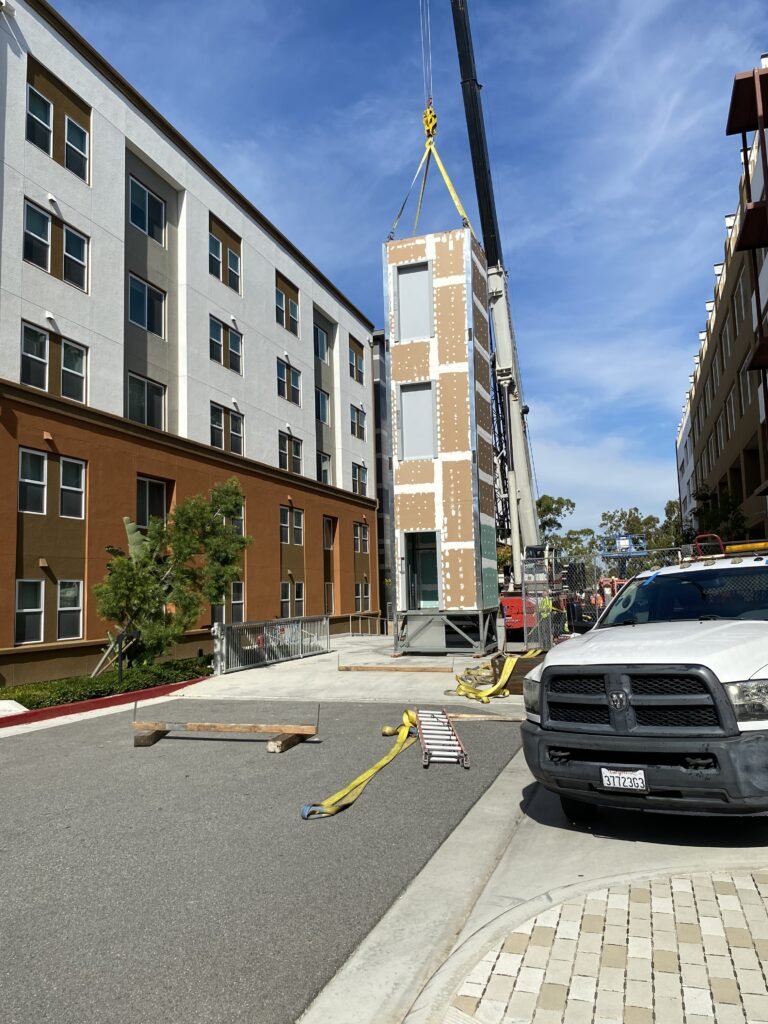

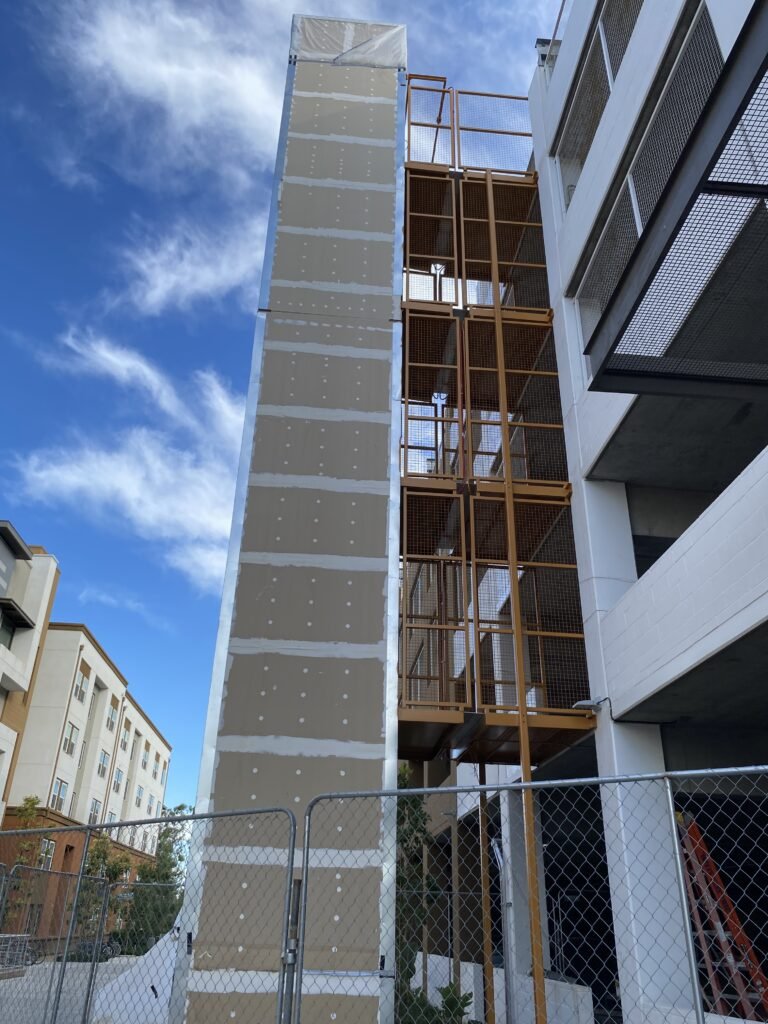

University of California Irvine Parking Structure Elevator
Model- 2500
Capacity -2500 LBS
Travel – 46’
Five Stops – In Line
Modular Machine Room
Bridge Connection




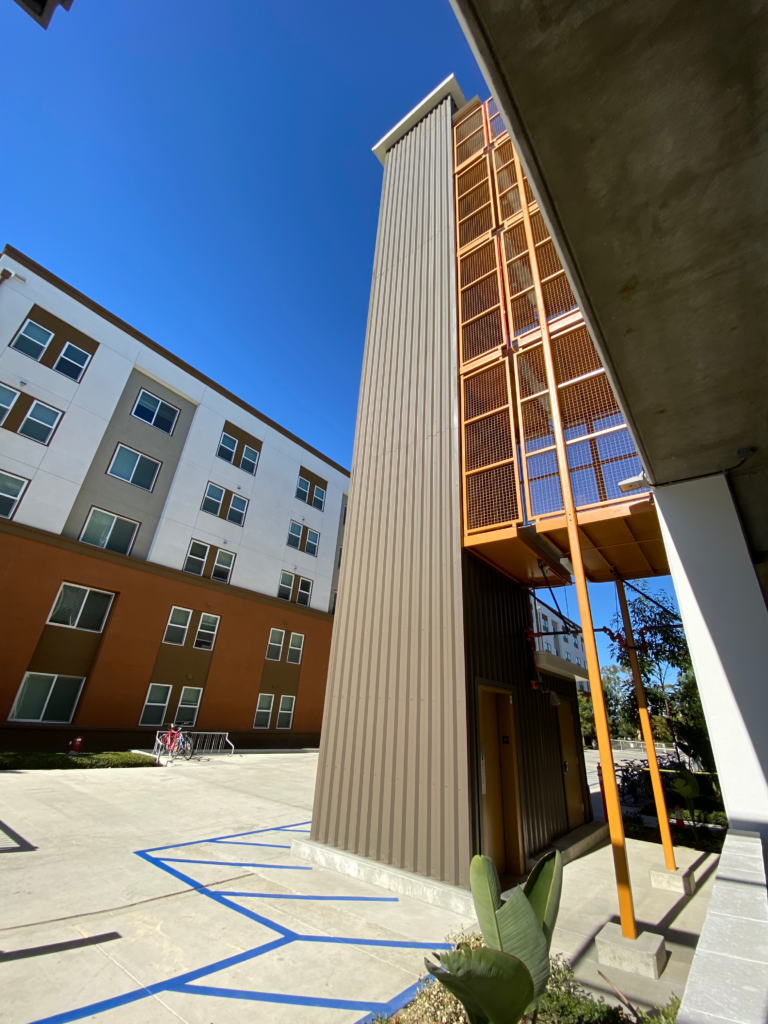
Congrats to the MEM Team and T.L. Shield & Associates the installers for the project. The MEM product is a true solution. It provides a safer environment by providing better and closer access to the parking garage. All this was done in record time. The fully installed elevator literally was set in just a few hours.
If you would like to find out more or have a discussion about a potential project you have, click the link below to ask for pricing or get a factory tour. We provide quality – consistency and simplicity for every job we do. If you contact us you will see the difference we make. Click the button below to contact us.

Four Hour Elevator Install Video – Here is just a real quick video on our latest placement. We usually say placement as the elevator arrives installed! In this particular project a five-stop elevator was required and we broke records in setting it in place time through our new REDZONE system. We placed this fully installed elevators in about 2 hours leading to our first two hour elevator install.
Amazing!
MEM is the leader in the modular elevator industry with more experience and higher skilled personnel than any other. We provide quality – consistency and simplicity for every job we do. If you contact us you will see the difference we make.
If you want to share the video through YouTube, here’s the link.
If you want the safer, faster, greener and smarter alternative for you next low or mid-rise project click the button below or contact us.

Modular Elevators – 2 Elevators 1 School / The MEM Elevator System is most often placed in mid-rise projects for every type of build. As a result, it is easy to forget that we cut our teeth on the low-rise, two and three stop elevators designed specifically for schools.
Over the years we have placed over 100 of our units in schools alone. They are a fast solution to the problem of needing little interruption to the school year. The flexibility is not only in fast placement and start up but, they can be designed to be placed inside a project or on an exterior wall. Placement for MEM is not a usual concern as they can go wherever your architecture team deems suitable.
Below you can see a series of photographs of several school projects that successfully used the MEM Elevator System as well as a short video where 2 elevators were placed in one school.








And just in case you are curious, we can conform with any and all jurisdictional requirements. That includes the stringent requirements of the California Department of State Architects (DSA). DSA projects can sometimes be a difficulty for some solutions. But, we comply fully and are willing to work with any authority, in any state to make sure the project goes smoothly. For more information about DSA, just click this link.
So if you are in need of a school elevator anywhere in the US you can act. Or if you are just a bit curious contact us. We can provide you a seamless and easy solution to your school projects. To find out more we provide two options below.
If you have a project in mind and think we would be a solution click the Fast Track Quote button below. Fill out as much as you know on the form. We will contact you with in 24 hours to fill in any blanks and let you know a thumbnail number. We also believe in transparency, so we offer a great opportunity to schedule a live virtual factory tour. Just click the button and request a date.

6 Reasons Modular Quality Matters – We have all been frustrated by low quality. Items purchased in good faith sometimes seem to break before they come out of the box. Or once out of the box, they look or perform nothing like what was pictured or promised when we bought the item. Instead of being happy with the purchase, words like cheap and flimsy cross our lips, meaning that we have been had. The more expensive the item, the more remorse follows.
However, in the modular industry quality is high because we take an antiquated process where onsite construction is the norm and move it to a production facility. What was then built by various people, in various trades, in various conditions becomes an orchestrated symphony of production. Historically poor quality and high cost is moved to a factory where exact processes and standards can be measured and accomplished. The modular process takes various acts of individual quality to a habit of success. For instance, our factory produced hoistways are always plumb and level. That is simply due to our factory processes that cannot be accomplished on the jobsite and it shows.
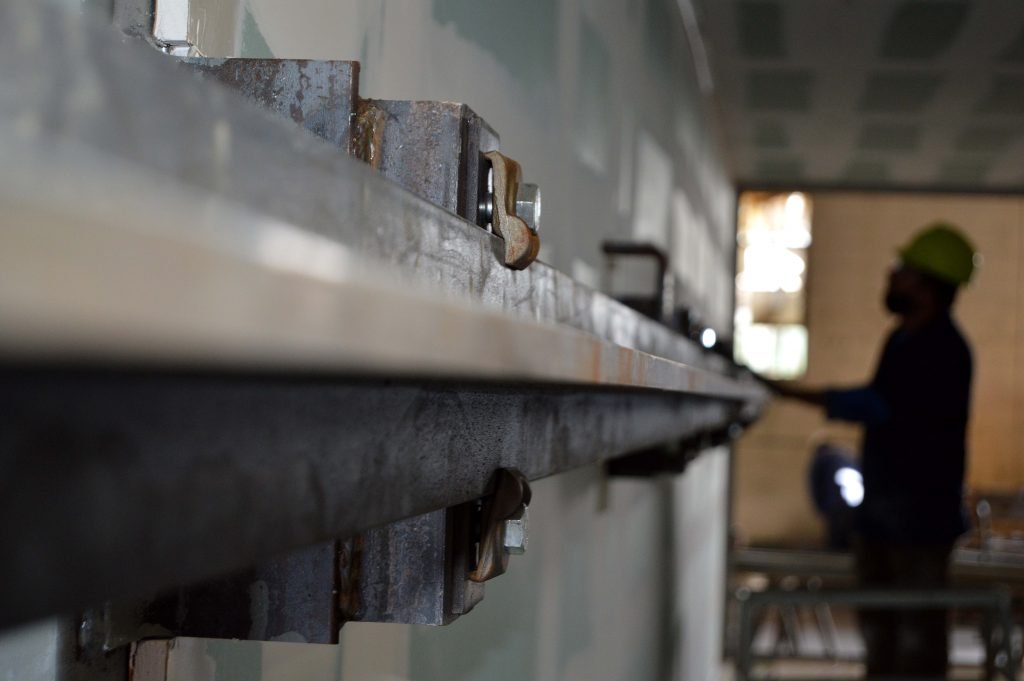
“Quality is not an act, it is a habit.”
Aristotle
As Aristotle said, “Quality is not an act, it is a habit.” And those habits are formalized into higher quality with modular manufacturing. In modular building you will never hear “close enough” or “I guess we will have to make it fit.” It is right every time, because the habits that produce quality are built in.
Unfortunately, there are outliers in some manufacturing facilities. Quality becomes just a slogan. If modular quality matters why do some not improve quality? Procedures are skipped, shoddy workmanship is allowed, new practices are slow to be adopted or worse continued tinkering and “problem solving” doesn’t allow for systems to work. In other words, if you have a team of problem solvers constantly changing the system in an unorganized fashion, the quality will undoubtedly suffer.
At Modular Elevator Manufacturing we make sure changes to procedures are checked and double checked before becoming standard operating procedures because modular quality matters. One person cannot just change something at a whim, even if it is generally a good idea. The procedure must likewise be changed with the whole team being aware of any alterations. That is where habits of quality are formed for the whole organization.
We agree with the Phil Crosby philosophy of quality and as a literal rocket scientist he knew a thing or two about it. He said, “Quality is the result of a carefully constructed cultural environment. It has to be the fabric of the organization, not part of the fabric.” Quality is not posters, or slogans or bright ideas that get used once and then forgotten.
For us quality is a top-down effort and philosophy emanating from senior leadership and permeating the organization at every level. Quality is crucial and should matter that much at every business. It does at Modular Elevator Manufacturing where we take quality seriously.
With that said here are the 6 reasons quality matters for us at MEM. There are probably more but these came to mind:
The entire premise of modular construction is that by instilling factory processes into the construction trade, the industry can produce a higher level of quality, faster and often at a reduced cost. That is what we do at MEM day in and day out. However, when slipshod practices and lack of experience infiltrate the market, quality declines. Then the premise of factory production being better comes under attack.
Whether due to ignorance, no experience or a desire to make a fast buck, when quality is ignored the reputation of the industry gets sullied. The result is a better process that produces a better product (safer, greener and faster) becomes more difficult for the consumer to accept. Who knows how many dollars, how much time and how much energy has been wasted. How many injuries could have been avoided? All due to a very small number of businesses that do not see quality as important.
That is why at MEM we do not think “close enough” is good enough. We know that low-quality has a cost to the industry, the customer and to safety. We strive for quality in all we do. Whether you need a multi-family unit elevator or one for a medical facility, an elevator for a retrofit project or new construction we provide a quality solution.
If you have tried modular elevators before and found that the quality was not as promised, don’t give up. Instead give MEM a try. We live by the above list of 6 reasons modular quality matters. You will not be sold a bill of goods for a fast buck, but instead you will find a partner providing quality you can count on.
If you have a project in mind just click the button below, we can get you budget numbers in less than a day. Of course you can also call us anytime, and have a real conversation with an expert in the elevator industry. We are looking forward to talking to you. You can also click the link for a tour of our facility. Also, we are proud of what we do and how we do it. So, if you are curious schedule your live virtual tour today.

Apples and Oranges Comparing Elevator Solutions – Modular Versus Traditional. In the construction industry there is a great desire to save time and money while simultaneously providing a high-quality, finished product for the client. This task is complicated immensely when multi-story projects are slated and an elevator is involved. It seems that no one in the elevator business wants to make it easy for general contractors, architects, project managers or building owners to make a clear decision about what elevator company or vertical transportation option would be the best solution.
To combat this problem specs have been developed over time for various elevator footprints, capacities and travel, based on the needs or use of the building. But this does not work! Being in the elevator business, I can tell you most of the time specs are routinely ignored by large elevator companies. At least until after the pricing has been submitted and the decision has been made.
The usual process involves the salesperson picking the closest standard product and then filling the proposal with “if, ands and wherefores” that will be addressed at a later date once a choice is made. Only then the specs are examined and leverage is brought to bear to force time sensitive decisions about the product selected.
This all too familiar dance is the reason the elevator industry is so despised in many quarters. One might draw the conclusion that the elevator industry does not want an apples to apples comparison to be made. Preferring, instead, to keep customers in the dark.
At MEM, we do not shy away from an accurate comparison and we will even help with your assessment, whether we are right for your project or not. Another option is to find a reputable elevator consultant that can help with the decision making process.
However, keep reading if you need a broad overview to help you in your assessment and decision making process.
Generally speaking when it comes to quality commercial elevators there are two very broad categories of solutions. Traditional elevators where the hoistway is built on-site and then the various components are pieced together inside once power is on or available. And modular elevators where the whole elevator is produced in a factory setting.
The first thing to know about either category of elevator is that the components are all very similar. After all, if comparing the types of elevators is the goal, there has to be a clear understanding of the quality of the components that make up the elevator.
Believe it or not most elevators contain, relatively, the same components. There are only a handful of companies that actually manufacture all the stuff inside a hoistway. Secondly, elevator components are highly regulated. The bottom line is that elevator to elevator most of the parts (regardless of name plate) are either the exact same or they meet the exact same standards.
Keep that in mind when a sales rep from a traditional elevator company starts talking about components. There is nothing magical or special about them.
The bigger question regarding parts and components is if they are proprietary or not. Avoid elevators with proprietary parts at all costs. Proprietary means that the elevator manufacturer has control over the functioning of the elevator through access to parts and tools. Service is restricted to just that company. This may mean a lower priced elevator up front, but over time you will be at their mercy. Never get an elevator with proprietary parts or for that matter, buy a building with an elevator with proprietary parts inside. You will regret it.
So if parts are not really different, what is the difference between conventional and modular? It is all about the packaging. The traditional elevator comes in crates or on skids and is assembled on-site once the power is turned on. So if you choose a conventional elevator, you really aren’t buying an elevator at all. You are buying boxes of elevator parts that are hammered, screwed and bolted together on-site in a cramped hoistway.
Think of the last car you purchased. Imagine if the dealership dropped off crates filled with parts, boxes full of hardware and most of the necessary tools to assemble your car in your driveway. Then the dealership sent over a couple of technicians on their timetable to assemble the whole mess. You would see this as you look out of your window and would think, “surely this would be easier in the factory!” It would be and so is building an elevator in a factory.
Thank goodness, that is not how the automotive industry works. They deliver a fully functioning, turnkey product that was assembled efficiently and safely in their quality (and climate) controlled facility.
Elevator companies for years have told the little white lie that they are manufacturing elevators. Not true! What they really do is manufacture some elevator parts and buy the rest of the components from different companies. They then ship them all in boxes to hopefully be assembled properly on-site. Good luck.
The major difference between conventional and modular is with modular you are buying an elevator…not boxes of stuff. Modular is manufactured as a finished product in a quality (and climate) controlled environment, not bolted together in a dark shaft at a technicians leisure. It is difficult to quantify, but if you ever rode in an elevator that rattled as it went up…it was more than likely haphazardly assembled in a cramped elevator hoistway and not in a factory.
Also, because modular elevators are usually engineered to be free standing, you get to decide when it arrives and when it is set in place. There are no elevator contractors taking over your site, no storage problems, no additional trades tripping over each other and the timeline becomes yours not an elevator installer’s.
So when comparing traditional and modular remember the following:
By looking at the short list above it is an easy call to make. The overall better choice for any low or mid-rise building project is the unconventional modular elevator manufactured by MEM. This is especially true when the pricing is generally in the same ballpark, but even when the initial investment is higher for modular the scale is still tipped in favor of the modular solution. The plumb and straight hoistway is always in the price of modular so there is that difference when comparing, but beyond that think of the shortened timeline that a modular elevator creates.
As an anecdotal example of the reasoning, while working with a building owner that decided to go modular for the first time in a hotel project, he thanked me for the extra million dollars he was going to make on the project due to the faster elevator placement. He felt the whole timeline was trimmed by six months by using a modular unit meaning faster occupancy. He went on and said that the million did not take into account the reduced general building costs of maintaining a job site over a longer period of time.
Even if initial cost of the modular elevator were higher, the overall cost for the whole project would always be more than made up for. This is especially true in colder climates.
But thinking bigger, there is a huge value to the comfort level with knowing it is a high-quality product due to the tight manufacturing standards and easily inspected process. For instance:
To be clear, there are sometimes when modular is not the solution. As and example they are shipped on the back of a truck. So even though we have produced freight elevators and elevators for medical facilities big enough for hospital beds, there are some special circumstances where we can’t get under a bridge.
Another example is overall tower height. When you get over ten to twelve stories, cost wise conventional is usually the better option, but on balance for most building projects the best solution is always modular and MEM is the place to start.
We are knowledgeable, experienced, helpful and ready to discuss elevators…not sell them. Honestly, they sell themselves our goal is just to educate the construction industry that there is a better alternative when comparing apples to apples or modular versus traditional.
If this blog post has intrigued you at all the process starts with clicking the button below. You will be asked a few general questions and then we will contact you so we can provide a thumbnail price for your next project.

Modular Elevators – Now You See It, Now You Don’t / What will the elevator look like when it is ultimately finished? In other words how will it integrate with the overall design of the building? There has been plenty of misinformation about modular elevators. Many believe that it is always an easily identifiable hoistway or shaft on the exterior of the building. That is not true, of course.
First, they can be placed inside a project or on an exterior wall. Placement for MEM is not a usual concern as they can go wherever the architect deems is suitable. Secondly though, just because they are placed on the exterior does not mean that it will be easily identifiable when the project is finished. Below you can see a series of photographs of the MEM Elevator System being placed on an exterior wall, but then it is covered. It seamlessly fits into the overall design. You can also see in the series when designed early in the project, how tight the relation can be between the elevator and building structure. It can then be covered in nearly any material used today. Now you see it, now you don’t.

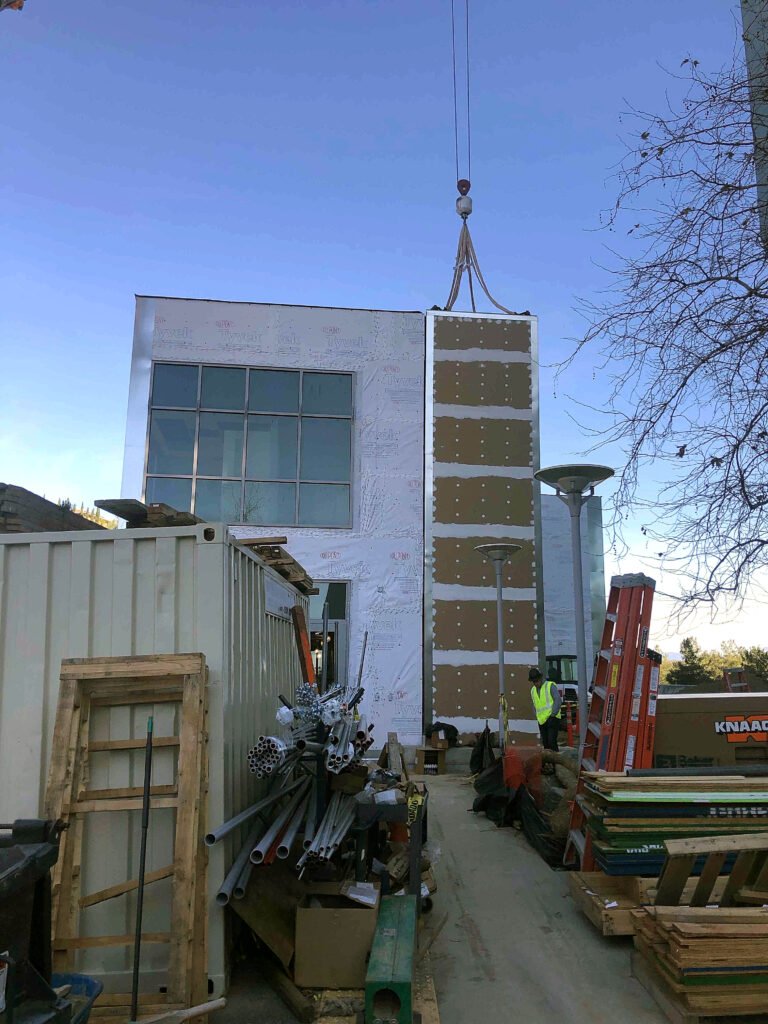


Poof. Like magic it is gone. The building retains the look the architect, owner and designer desired.
So, if your concern in going with the MEM Elevator System is that it won’t integrate into the building design don’t worry. It will. That means that you can have all the advantaged of the MEM Elevator System with no drawbacks when it comes to project design.
But let’s not ignore the inside of the structure. Again, below you can see what the interior of the building looks like facing the elevator doors and hoistway. It is seamless as well with no obvious break in the integrity of the design.

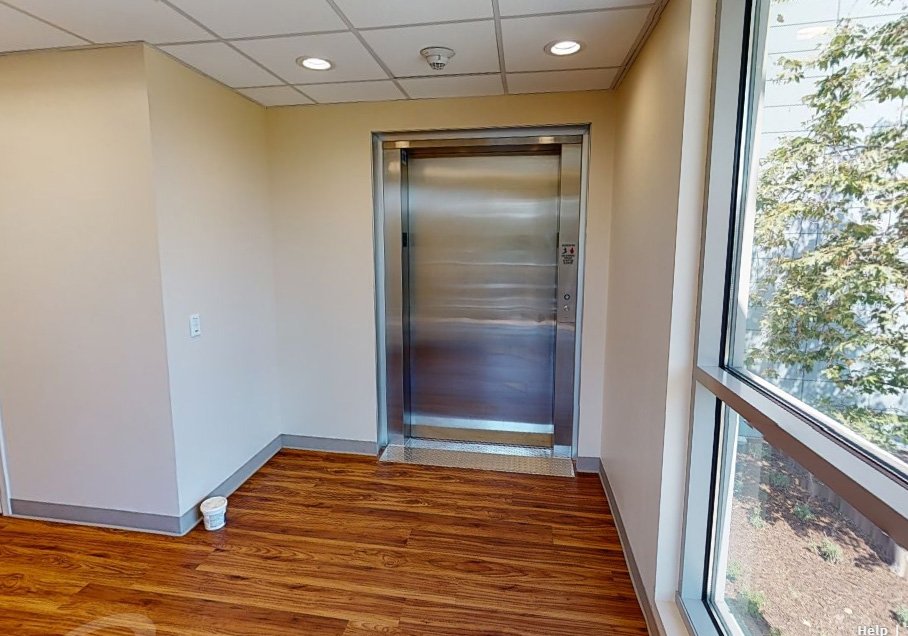


Sometimes, due to the complexity of elevators people think that a modular elevator has to be even more difficult to use in a planned building project. That assumption is not true. A modular elevator is just an elevator in most respects. They have many of the same components, just installed in a smarter and better way. Installing the commercial quality elevator in a factory means more inspections, better fit of the components, and much less time on the installation. That makes them better and easier way in many ways.
Craig Braund, MEM Systems expert with TLShield and Associates agrees saying, the MEM elevator makes projects easy for everyone. “Whether you are looking at the capabilities of design to the simplicity of installation and speed of placement and start up, no other elevator can compete. It is the best option for low and mid-rise applications.” He went on to say that working with the professionals is key. “Too often in the construction industry people don’t understand how the modular units are integrated. In this case everyone worked in concert with each other for stunning final results.”
So, now you see it, now you don’t is not just a magic trick. It takes teamwork and vision, but the outcome is better than what traditional elevators can offer. Team on this project deserves a thanks and congratulations. So, to RAD Technology, Palomar Health and the architecture firm Mascari Warner Dinh Architects thank you for including us!
Now you can act. If you are impressed with the project and the MEM Elevator System. I you are a bit curious contact us. We can provide you a seamless and easy solution to your projects as well. We provide two great ways to find out more.
If you have a project in mind and think we would be a solution click the Fast Track Quote button below. Fill out as much as you know on the form. We will contact you with in 24 hours to fill in any blanks and let you know a thumbnail number. We also believe in transparency, so we offer a great opportunity to schedule a live virtual factory tour. Just click the button and request a date.

MEM Elevator – Walk Through Wonder / RAD Technology Medical Systems worked with the Palomar Health team and Mascari Warner Dinh Architects for a spectacular design. It is a 6,700 sq ft, custom 2-story OSHPD approved CSU addition. The plan included the MEM Elevator System that you can see in a 3D Walk-Through RAD posted.




In addition the unique design for the expansion, the walk-through clearly shows the modular elevator. It was designed to include a complete stainless-steel package. It gives the building a clean, professional look Palomar Health was looking for.
Also, this project is proof positive that speed to completion does not have to impede great design. Some may think a fast timeline can be detrimental to the overall aesthetics of the building. However, based on the final look, feel, and quality, we see that is not true. One would not know that the project was assembled and ready for occupancy in less than 8 months.
Craig Braund, MEM Systems expert with TLShield and Associates says this was a perfect fit. “Anytime you need speed and quality combined in a project that contains a low to mid-rise elevator, the MEM Elevator System is the best option.” He went on to say that working with the professionals at RAD, Palomar and Mascari Warner Dihn was a pleasure. “Too often in the construction industry people don’t understand how all the various components work in concert with each other. The finished Palomar project shows precisely how everything should work together.”
So, from Modular Elevator Manufacturing and the MEM Elevator System, congratulation for a fantastic project. To RAD Technology, Palomar Health and the architecture firm Mascari Warner Dinh Architects thank you for including us!
Now you can act. If you are impressed with the project, the MEM Elevator System, and a bit curious contact us. We can provide you a walk through wonder like the one featured in the 3D rendering. We provide two great ways to find out more.
If you have a project in mind and think we would be a solution click the Fast Track Quote button below. Fill out as much as you know on the form. We will contact you with in 24 hours to fill in any blanks and let you know a thumbnail number. We also believe in transparency, so we offer a great opportunity to schedule a live virtual factory tour. Just click the button and request a date.
Never miss a blog post again. Sign up for our monthly email newletter. Get important information about elevators, the modular industry and more.
